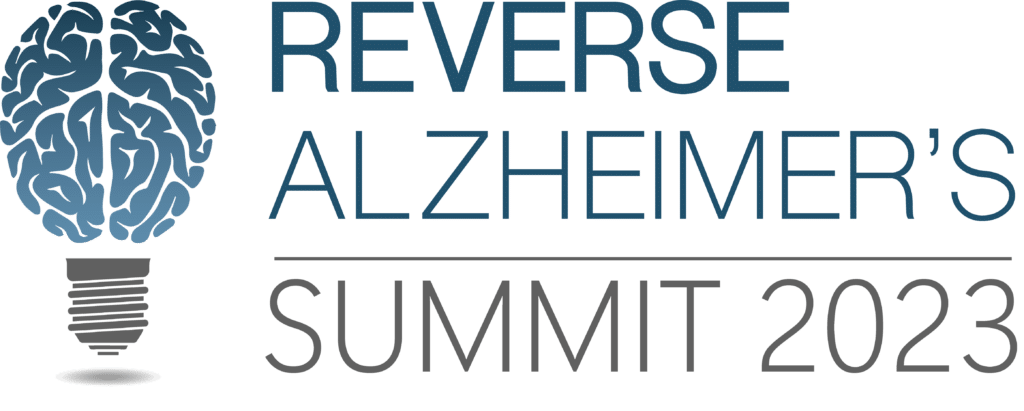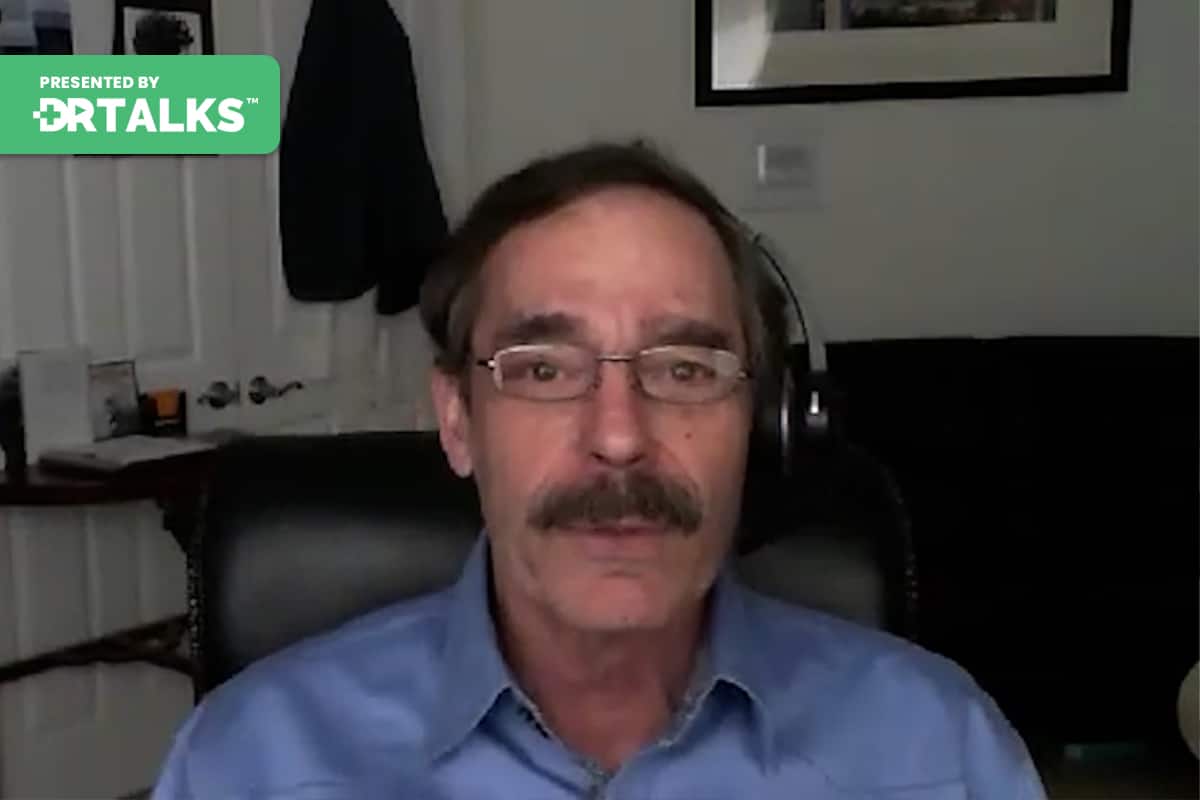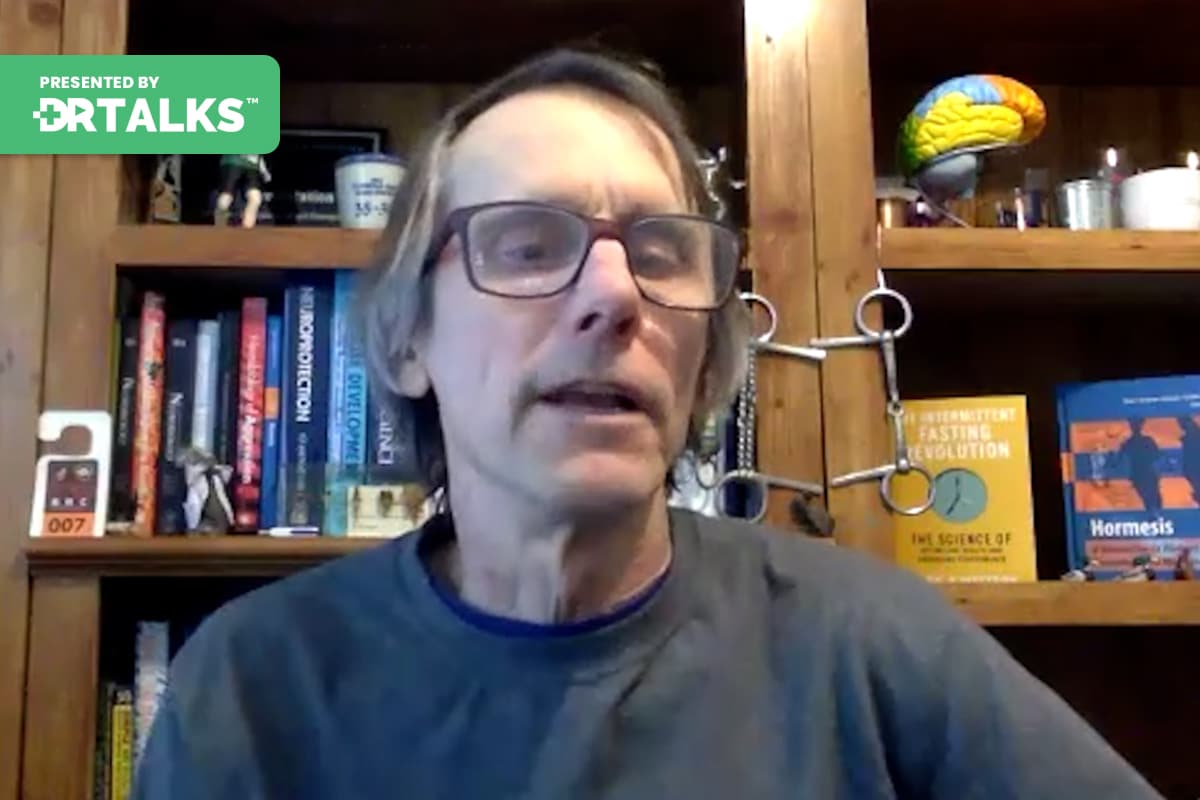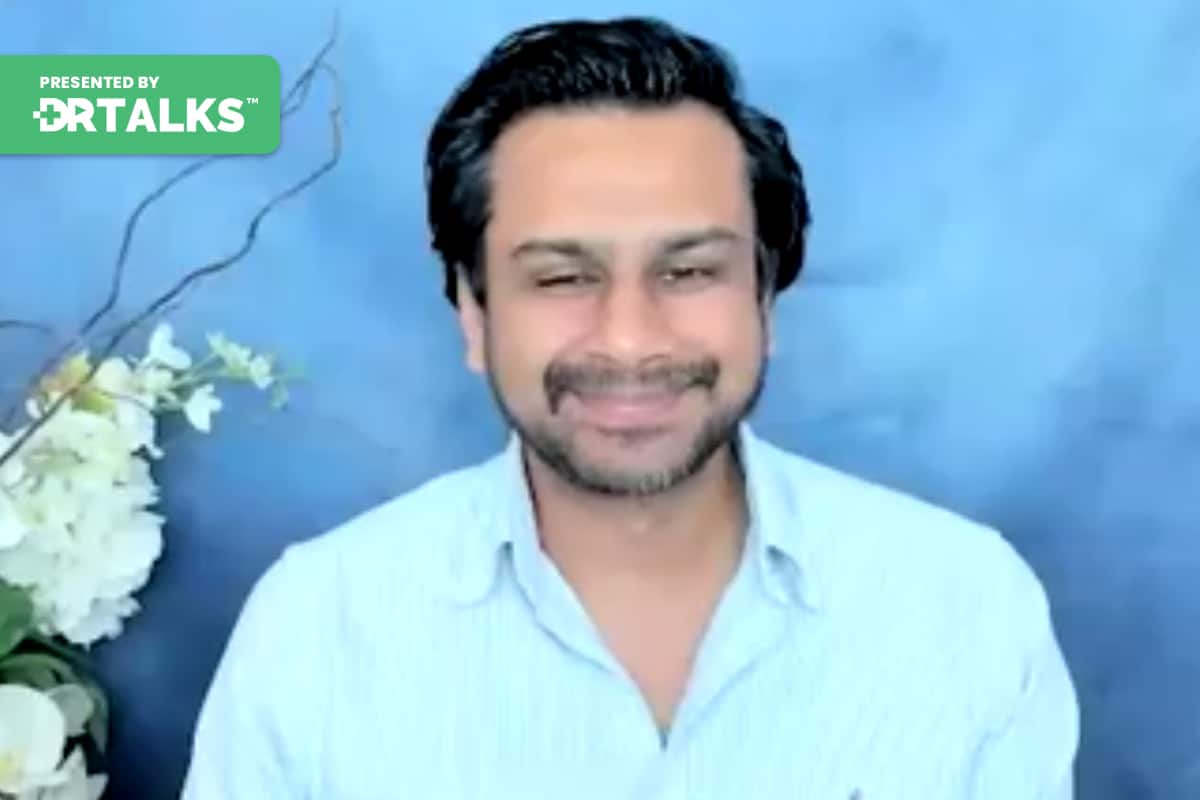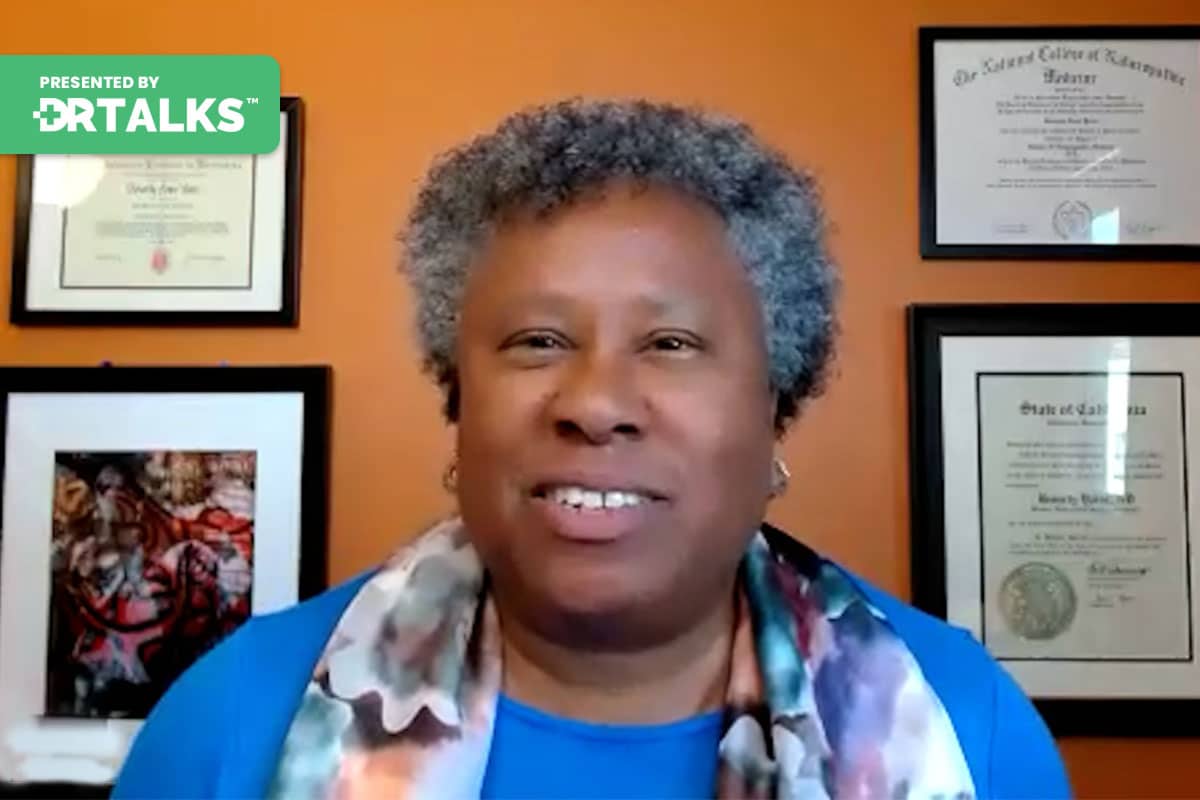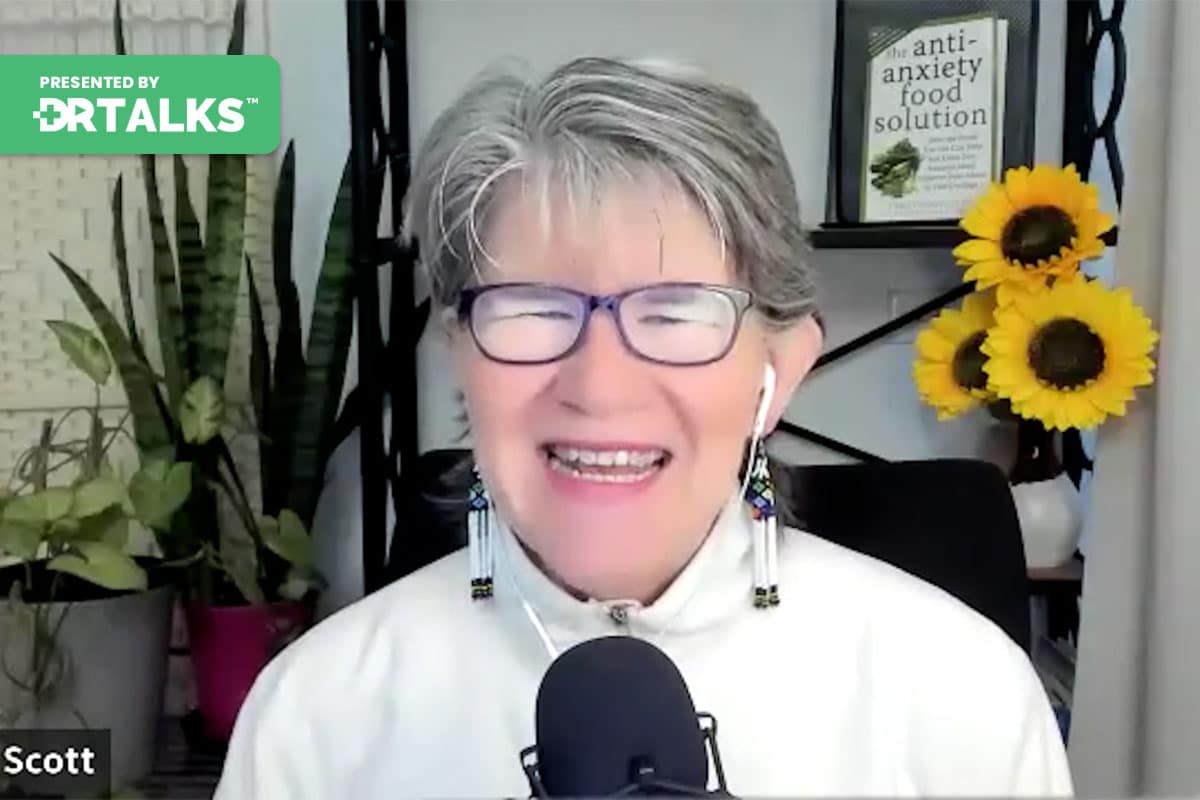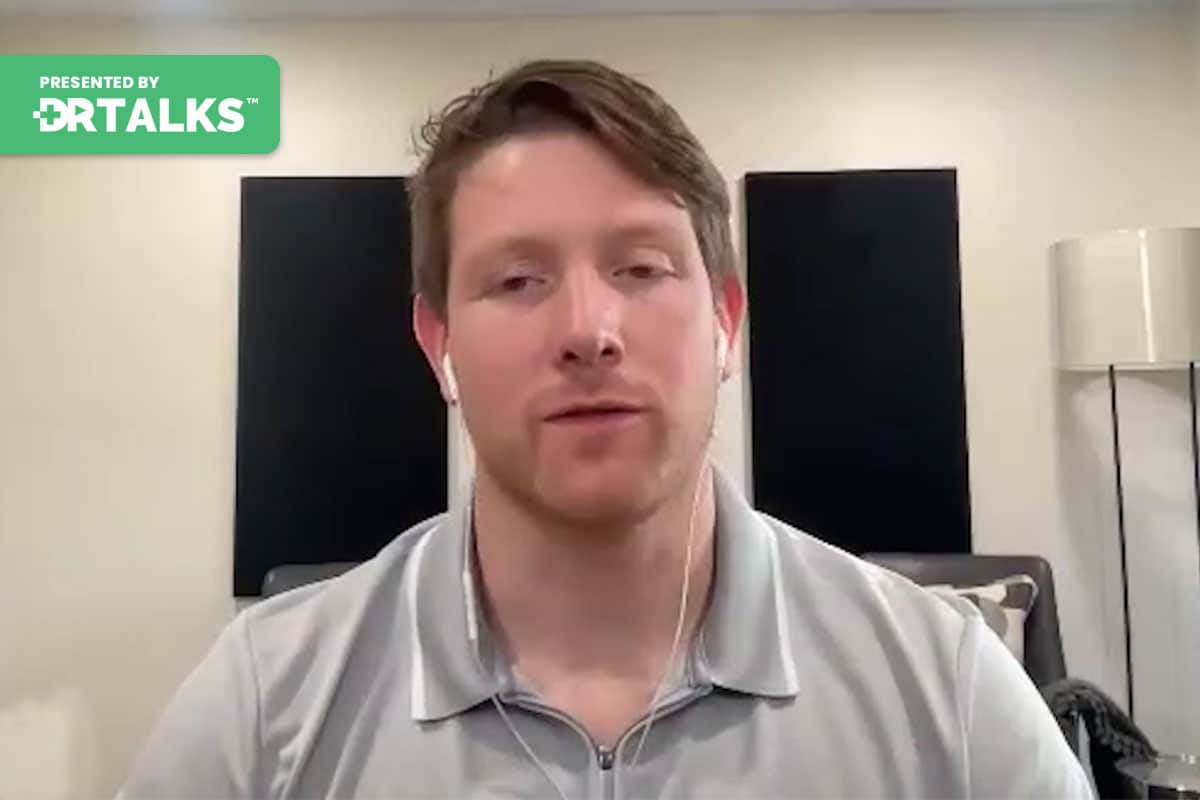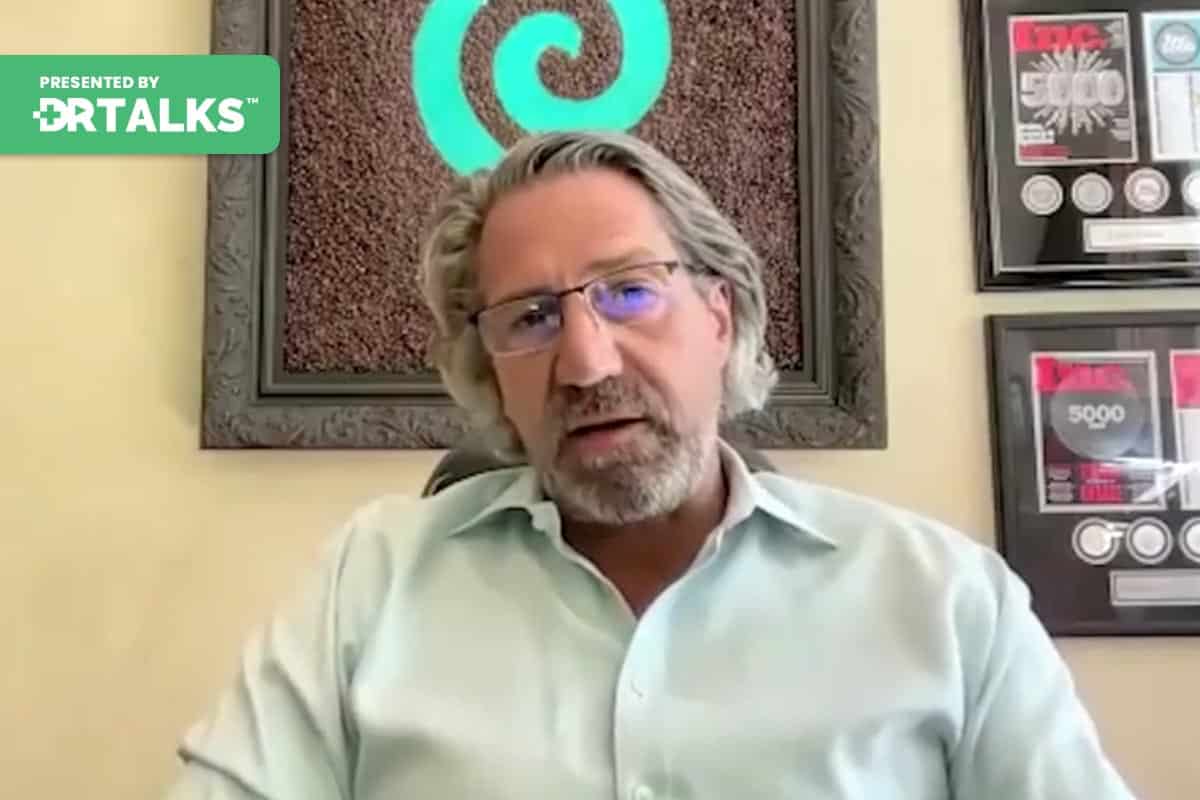Join the discussion below

Dr. Heather Sandison is the founder of Solcere Health Clinic and Marama, the first residential care facility for the elderly of its kind. At Solcere, Dr. Sandison and her team of doctors and health coaches focus primarily on supporting patients looking to optimize cognitive function, prevent mental decline, and reverse... Read More

Dr. Mark L. Gordon continued his medical education in Clinical Orthopedics (1990), Cosmetic Dermatology (1993), and Sports Medicine (1995) prior to pausing in 2007 to write his first book on Interventional Endocrinology a term which he coined in 2003 to represent his approach to Anti-Aging Medicine. His book, The Clinical... Read More
Dr. Mark Gordon explains how hormones can affect your brain health
- Learn about traumatic brain injuries and neuroinflammation
- Understand the interaction between your brain and hormones
- Discover parent hormones that may benefit you
Heather Sandison, ND
Welcome to this episode of the Reverse Alzheimer’s Summit. I’m your host, Dr. Heather Sandison, and I can’t wait to introduce you. And you actually maybe have already heard of Dr. Mark Gordon. He’s a medical doctor. And you also may have seen him on the really incredible movie that has been out or maybe through Millennium Health. He was deeply involved with the movie Quiet Explosions, going deeply into what’s going on between the connection between traumatic brain injuries and neurodegenerative disorders, not only Alzheimer’s, but also depression, anxiety and differences. And even in our personalities, like there were so many things that I learned from just watching the movie recently. And I was so impressed by Dr. Gordon, not only through the movie and his appearances in the movie, but our last conversation. I was wishing that I had recorded it as well because I learned so much from him so quickly. So today we’re going to go into the connection between traumatic brain injuries and Alzheimer’s and also how we can use hormones to reverse the disease process that’s associated with traumatic brain injuries and inflammation and then eventually Alzheimer’s. So, Dr. Gordon, thank you so much for taking the time. I know you’re a busy man. Welcome.
Mark Gordon, MD
Well, I always have time for education, Dr. Sanderson, and to move the marker forward for everybody who’s listening, because there’s so much science out there, so much documented literature, which unfortunately has not come to the forefront to help us with issues like neuroinflammation, brain inflammation that leads to things like Alzheimer’s disease, Parkinson’s disease, multiple sclerosis, ALS, infertility, lack of hormone production. And our purview is too superficial. Oh, you’re depressed. Let’s give you medication to treat the depression. Oh, you got anxiety. Let’s use the medication for treating anxiety. So antipsychotics for people with schizophrenia and so forth. How about this? How about we learn why an individual is developing those kinds of complex symptoms? And that’s where I went into I went in to look at from a molecular standpoint, which is at the cellular chemistry level. Why is it that a person develops something like Alzheimer’s? And one of the forces behind it was the fact that my mother actually passed from a form of dementia, which was due to a medication that she was put on. And we miss that aspect. There’s a medication out there, a group of medications out there that will foster that from happening because it interrupts the available kitty of very important chemistry of the brain. The chemical that’s affected is cholesterol, and cholesterol is extremely important in the brain.
Heather Sandison, ND
So what was the medication she was on?
Mark Gordon, MD
Statins. Oh.
Heather Sandison, ND
I knew that.
Mark Gordon, MD
Yeah, it was a statin. And what happened was her cholesterol was elevated and the doctor knee jerk and put her onto a statin drug never looked at her thyroid function and her thyroid was low and low thyroid is associated with elevated cholesterol. So if you had just fixed the thyroid, he would have improved the cholesterol parameters and never been placed on statins. But majority of allopathic physicians fail in their thoroughness of doing things like reverse T3 or total T3. So she had an issue with T for converting to reverse T3 which caused her cholesterol to elevate, not less. You look for it, you’d miss it. You’d assume thyroid is normal. So anyway, so I’m well aware and that’s what pushed me heavily into Alzheimer’s to look at the mechanisms by which it occurs. Now, we’d like to believe that it’s all genetically predisposed. Well, we’re all predisposed to one form or another of cancer. Why don’t we all get it? The reason is we haven’t triggered it. We haven’t turned the operon, the switch, the on switch on.
And we have the ability through great nutrition, hydration, avoiding inflammatory components in our diet, like gluten and so forth, and processed meats and foods and vegetables to minimize the production of these inflammatory chemicals in the brain. The fact that Alzheimer’s story in Alzheimer, it’s an inflammatory process. And what I’ve seen, aside from my my personal exposure to it, is in the trauma world, which is the core of what I do in traumatic brain injury, when people with trauma, traumatic brain injury, it will actually induce the production of those inflammatory proteins called beta amyloid or amyloid beta. In that amyloid beta will cause inflammation and greater inflammation and turn on the cells in the brain. We call them micro glial and they’re responsible of produce producing a lot of the inflammation.
So what is this inflammation that’s generated from all these different sources? Causation from Alzheimer’s to slip and fall from head, trauma from a blast trauma. How is this inflammation affect who we are and how we function? And the way that occurs is on just one of the multiple levels. Okay. I won’t get into too many of them, but on one of the levels is this inflammation interrupts two very important enzymes in the brain, and those enzymes are responsible for making serotonin. Well, we all know that serotonin is related to depression. Somehow. There’s been a couple of articles that came out of England last year that actually refuted the relationship between serotonin and depression. But they actually found what premises is low serotonin, elevated occurrence of depression? Well, what they found in this study is that people with low levels of serotonin didn’t have depression and people with higher levels of serotonin had depression. Not everyone, but you could not absolutely state that if you have low, you’re going to have depression. So it blew that whole mythology of serotonin creating it. And the other hormone that gets affected by this inflammation in the brain is melatonin. So if you don’t have melatonin, you can’t sleep. If you don’t have serotonin, there’s a possibility you might get depression or anxiety or some other form.
But it goes deeper. It’s not only the serotonin melatonin, but there are other neurotransmitters in the brain, the epinephrine and the awkwardness and the dopamine and so forth, and so on. They get influenced by information, so you can’t make the hormones as well as we have things called receptors. Think of receptors as a lock and the hormones are key and the key goes to lock in, unlocks the lock, and the door opens up and creates an effect on the set. And that’s how our body works. One nerve tells the next nerve what to do. The next one, next one, next one. And this cascade leads from one part of the brain to another. So the control centers in the brain are influenced by the change in the level of communication, which is predict and or based upon the health of the chemistry in the brain and trauma disrupts it.
Heather Sandison, ND
I see. So the trauma that I had this privilege of watching this movie is I got to see a bunch of your patients stories, which is so compelling. And it wasn’t just veterans, it wasn’t just NFL players. There was a young woman who had been raped and she had been through a very different type of trauma. There was another young woman who was a gymnast. So I think a lot of the the media attention is around men who have either been in wars or who have played football and worn helmets. And, you know, there’s a particular type of head injury that’s associated with that, as you well know. And I think expanding this TBI picture to kind of a greater population is important. So many people don’t recognize that what they’ve had is a traumatic brain injury and that that might be the root cause of the inflammation in their brain or put them at risk for neurodegeneration.
Mark Gordon, MD
Absolutely. And in the way that I look at of this category of traumatic brain injury is by dividing it into two types. One is called a traumatic brain injury and the other is called a non traumatic brain injury. The traumatic having some kind of physical contact with the body and also with the brain. But we can have situations where impact trauma is below the neck can still lead to problems in the brain. And there was a beautiful study out on female athletes who had a fracture of a leg and they developed the same kinds of symptoms that someone who was hit on the head. And then we have people who develop problems with their gut dysbiosis, leaky gut syndrome, someone who was taking antibiotics or drinking alcohol or has allergies. Their gut develops the chemistry that creates the inflammation when it passes into the brain to elicit problems with the brain. We also know with autoimmune diseases like psoriatic arthritis, which has a skin psoriasis and also has problems with joints, it might have with both and it generates a group of chemicals called cytokines. And these cytokines pass into the brain and will cause depression. And the depression is, I think was 63 or 67 to 90% of the people who have psoriatic arthritis will develop depression as a co morbidity to their underlying autoimmune condition called psoriatic arthritis. And what they proved how it was proven was the medication for treating the psoriatic arthritis, just like for rheumatoid arthritis, just like for Crohn’s disease blocks these inflammatory cytokines. And when they block these cytokines, they’re symptoms, they’re autoimmune symptoms, whether or not it’s rheumatoid arthritis, psoriatic arthritis or Crohn’s disease that quell that improved. And as a side effect, their depression disappeared.
Heather Sandison, ND
Fascinating. So maybe instead of looking at serotonin or SSRI that are typically prescribed for people who have experienced trauma or experiencing depression, we should be looking at inflammatory markers and then treating the cause of the inflammation. So you I think of your expertize has been deeply in this space of that of hormone replacement therapy, essentially, and testing and being very specific about this very individualized, very precision based about how you test and then treat those who are struggling post TBI, post traumatic brain injury. And so can you take us through like a typical take that?
Mark Gordon, MD
Well, absolutely. But let me preface it by stating that that same inflammation can cause the shutdown in the control mechanism in our brain that will allow for us to produce below the neck our hormones. And that was in 2013 article that showed that the inflammation stopped. The area of the brain called the hypothalamus from sending a signal to the pituitary gland to release the two key hormones that generate fertility follicle stimulating hormone. And the luteinizing hormone that stimulates in a woman her physical cells to make testosterone and the leading cells in males to make testosterone. So when we have a patient that comes to us with whatever form of traumatic brain injury, whether or not it’s a physical component or non physical component, traumatic or non traumatic, we do a laboratory testing the biomarker panel that took me about 14 years to develop.
And what it looks at is the patterns of these brain hormones and the hormones below the neck. The brain hormones are called neural steroids and the ones produced below the neck are called neuro active steroids. They’re both hormones, but it’s the location that they’re being produced that has a little bit of difference on how it influences us. So we get these 28 biomarkers that are mostly hormones. Yes, there’s insulin and zinc and some other things in there for good flavor, for fullness, and we analyze them. Now we’ve gotten to a point where the amount of knowledge that is necessary to accurately interpret these 28 points because it’s 28 to the 28th power, because you look at the first one and the second, the first, second, third, first, second, third, fourth, and you interrelate them. I spent the last eight years, almost nine years, writing a software package that analyzes the the laboratory tests and also integrates medication supplements, surgeries, past medical history into interpreting these 28 markers. So we get the interpretation of these 28 biomarkers, and each one gives us a statement about, well, your thyroid is elevated, which caused your prolactin to go elevated, which caused you to shut off your ability to make testosterone. So how do I give testosterone or do I fix the thyroid? You fix that thyroid. It fixes the prolactin, which fixes your ability to make to start from as the progesterone estradiol and so forth. So what we do is we personalize, customize a treatment protocol. And within that treatment protocol for a patient who had a traumatic brain injury, not only do we address the hormonal deficiencies, but we also we address the inflammation and we use botanicals. We use nutraceutical products to drop the production of these inflammatory chemicals. And we also know that if we elevate estradiol progesterone and testosterone, they through help to reduce inflammation. Also. But it’s a catch 22.
You’ve got inflammation shutting off the hormones. So the only way you can get those hormones back on is to shut down the inflammation. But while you’re doing that, you need to give a little bit of the hormones to help them to get over the hurdle. And that’s how within 90 days we see such incredible amounts of improvement. We just did a survey of some of our patient population in January, and they’re getting a 77% improvement within 12 months of their underlying complaints, whether or not it was depression, anxiety, insomnia, cognitive impairment, the ability to to speak, to choose words. These are influenced by higher levels of inflammation because it interrupts the communicative pathways of the communication channels. Think of the brain as having lots of cabling and what happens with inflammation is it pulls those cables apart and this disrupts the communication. By stopping the inflammation, those cables are able to get back together.
Heather Sandison, ND
Got it. So there’s a bit of confusion, particularly for women, I think, who are approaching menopause or post-menopausal because of the Women’s Health Initiative study. And I know you’re very familiar with the litany of research out there. I mean, there was a January 20, 23 article that I just read this week. There was a reduction in all cause mortality for women who start by weight or who start hormone replacement. They didn’t even qualify it with it being bioidentical. But a reduction in deaths for women who get on bioidentical hormone replacement. Sorry, I keep saying that because it just comes out of my mouth. I just say bioidentical every time. That’s what people every time. But this didn’t even qualify with that.
So, I mean, and then there’s this finished study, I’m sure you’re familiar with nearly half a million women looking at decades of hormone replacement. And there’s a reduction in risk of getting breast cancer with the with using estrogen and estrogen progesterone replacement therapy doesn’t matter when you initiate. It doesn’t matter if it’s in your fifties, your sixties or your seventies based on half a million Caucasian women. I will I will give it that. Right. It’s not you don’t look at women from all over the world, just women in Finland. But there are huge data sets that really indicate the safety of this. And yet the day to day, when you talk to people, they are terrified of replacement and you speak to that.
Mark Gordon, MD
Absolutely. Well, you can finish on that and I’ll start and say that the key here, you stated it, the difference in the Woman’s Health Initiative and what 2001 was, the fact that they used non bioidentical, they used artificial hormones and all the studies that are showing positive outcomes, benefits are using the forms that are bioidentical bio equivalent where they’re plant based more than being synthetic products seven hydroxy method progesterone, which is horrible. But in the W they try one of the things that did come out that they really didn’t push is the occurrence of cancer of the gut dropped, there was GI cancers reduced. Okay then you look at studies out of Georgia, Atlanta, Georgia called the Protect study women who are on bioidentical hormones at the time that they have a traumatic brain injury, their death rate is in half. They recover faster.
Also, when you look at strokes, if you’re on hormones, what will happen is you recover faster because the neuroplasticity, the cognition and all of that is regulated by estradiol and also by progesterone. Yes, testosterone plays a role. But I think one of the most damning articles that came out this last year was from the endocrinology world, where they basically said there’s absolutely no reason to replenish prophylactically, replenish hormones in a woman who is asymptomatic. And I’m going, wait a second, this is then reactive. Let’s wait until they develop the cancer. Let’s wait until they have the irreversible stroke. Let’s wait until they have the irreversible traumatic brain injury with personality change and so forth. Let’s wait until.
Heather Sandison, ND
They’re able to process that. But I have patients who come to me and they say, Well, the first person who talked to me about my hormones was actually my endocrinologist, who was I was seen for my osteoporosis and they couldn’t get it from their GP, they couldn’t get it from even OB-GYNs. They had to get it from somebody who was treating bones. And I was like, Well, thank God, I’m so glad that you had an endocrinologist and bone health that was willing to do that. But there are so many things brain health, bone health, mood. It’s not just about hot flashes. It is about so much more. And then progesterone and its effects on sleep and I know that you know very well and I’d love for you to speak about this in a little bit more depth. But the connection between hormones, not just melatonin, but other hormones and sleep and quality of sleep and how important that is to brain health.
Mark Gordon, MD
Absolutely. It’s one of the mainstays of our treatment is about training alone. Now, for me, alone is also referred to as the mother of all hormones, because it is the first hormone that becomes both an androgen and an estrogen down its respective pathways. So if you don’t have enough progesterone because the body doesn’t have enough cholesterol or the hormone luteinizing hormone, it isn’t available or there’s a biochemical issue going on in the body that happens as we mature, you will have deficiency of pregnant load. Now pregnant alone is converted to progesterone and there’s another one that’s less known called pregnant lodeiro. And then progesterone converts to allow pregnant women back up to the beginning. Progesterone, hello, pregnant, alone, preemie, alone and pregnant. GILL What they do is they remove inflammatory, free radicals from the brain. What they also do is they stimulate communication between neurons. That’s called synaptic genesis. What they also do is help for neurons to repair, and they believe it also induces new nerves, neurons to be produced, brain cells, nerve cells. That’s on one side. On the other side, it upregulates the production of Gabba Gabba Aminobutyric acid is the natural xylem of the brain that allows you to get into that deep recovery. Sleep REM, sleep deep sleep. And if you don’t have it, we see veterans who come in and last sleep trauma explosions seems to selectively inhibit the production of this pregnant law. And they all have insomnia. They all have insomnia, and they all have low levels of prenatal on.
And when we replace the pregnant mom by giving them their dose 15 to 30 minutes after dinner, couple of weeks, they’re sleeping like babies again. It was our first game changer in our practice, but let’s go down for a minute alone goes to just strong progesterone helps with GABA let’s go to pregnant alone to alo pregnant alone, alo pregnant along came out five years ago as a new pharmaceutical drug called results, so which is also called Brexanolone. And what is it for postpartum depression, depression, anxiety. And it’s an inexpensive drug for $34,000 a year. Okay. And then on top of that, you have to be in the hospital for 30 hours to get an I.V. infusion of the drug. So in a year’s time, it might be about $100,000 in cost. The cost of pregnancy alone pharmaceutical grade for women alone is less than $100 per year per year. So it’s either $100 or $100,000 for the same benefit. So in our 8000 or so patient population, the majority are pregnant, alone to get the benefits of sleep improvement. All of our veterans are on pregnancy loan to get the benefits. So I will. Pregnant alone is the key. But in order to get there, you need pregnant along to progesterone to output. No one.
Heather Sandison, ND
Got it. Wow. I am inspired to use more pregnant alone. I said we use a lot of progesterone but that and it’s such an easy one. It’s inexpensive. You can get it off at any health food store. It’s a really easy one to start getting the benefit of. So you call that the mother of all hormones, right? Yeah. I think of as sort of the father of hormones. These are parent hormones. Essentially, there’s a biochemical cascade and those two are available in health, food stores. You can get them without a prescription, whereas the other ones, you really do need a doctor support and a prescription to get. So can you talk about the benefits or risks and and when you would use DHEA?
Mark Gordon, MD
I use DHEA all the time. And the reason why I use DHEA all the time is because of some major studies that came out. One of them is called the male Massachusetts Male Aging Study, and there’s a female aging study that also came out. What did it show? They showed that quartiles the lowest group or the lowest level of DHEA increases your risk for heart attack and death. It’s called a schematic heart disease. And you can go online to Google scholar, Google and look up the male Massachusetts aging study on DHEA. So DHEA is the leader in the development of testosterone estradiol interesting dial in estrogen, and then estrogen and estradiol can convert over to estriol at the right time. Body chemistry, the benefit of DHEA below the neck is it protects the heart from death and heart attack. It protects the lungs from cytokine storm that is precipitated by cold and sex or any kind of lung infection. It helps with insulin glucose metabolism, it drops inflammation, and it helps with wound wound healing and it boosts the immune system above the neck. The DHEA, when it converts to DHEA, s as means sulfur. It’s the activated form in the brain. DHEA below the neck is the active form and above the neck. DHEA s actually increases the coding of nerves called myelin. And in the literature, if you look at DHEA and multiple sclerosis or DEMYELINATING conditions, A.L.S. multiple sclerosis, you see it still on the books as being a means to turn on the production of myelin to improve the coding of nerve. So the conduction of information is enhanced.
It also increases the production of growth hormone in males by 10%, in females 15 to 20%. It also drops depression. Back in 1952, there were articles coming out about this inexpensive natural product extracted from Mexican wild yams. Helps to drop depression. In a major study by a doctor Morales in 1993, he found a 30% reduction in depression, significant reduction in depression. See, when you have a cold, are you smarter or less smart? Most people answer that question by saying less smart, just like I do. And the cause for that is an elevation in one of the inflammatory cytokines, specifically interleukin six DHEA decreases that, so it can give you some protection. It’s not going to eliminate it, but it’ll give you a better edge on resolving the infection. Let’s ask it. And that’s the benefit of DHEA.
Heather Sandison, ND
Well, okay. So I. I love that explanation. Thank you so much. I’m just as always, I’m learning so much from you. I’m curious about growth hormone. You mentioned growth hormone that you can’t get growth hormone directly. Right. We don’t we don’t inject growth hormone typically. But there are ways to increase our growth hormone as we age. What are the ways that you support growth hormone and what would indicate the need for that?
Mark Gordon, MD
Well, a blood test is the most is the simplest way to determine. And it’s not just measuring growth hormone. And the reason why measurement of growth hormone will misdirect you, especially when you draw the blood in the morning, is because growth hormone is produced at night between eight at night and four in the morning. So when you get your blood drawn at 10:00 in the morning, you’re looking at the lowest level. And hopefully the physician draws that level, understands that that is the lowest and not to react to the low level growth hormone, but to also do another blood test called insulin like growth factor. One IGF one, which should be within a normal range in the morning because it’s connected to a carrier, a protective protein that makes it last up to 24 hours. Growth hormone lasts 30 minutes. IGF one, if it was separated by itself, 8 to 10 minutes. But when it’s hooked up to a specific carrier, it can last for 20 to 24 hours. So what are the benefits of growth hormone? The benefits in the brain, if you look at some of the literature that’s out there, helps with Alzheimer’s disease. It helps with emotional turpitude. There was an article that came out in 2017 that looked at the group, a population of people who had a form of depression, which is called atypical depression or treatment resistant depression. They would be put on medication to address their depression didn’t work. They went back and tested them for growth hormone and they found 61%, six one out of 100 were deficient in growth hormone. Within 1 to 2 months of replenishing the growth hormone, they had improvement in their depression or resolution of their depression, and they ended up with four benefits. They slept better. They had better interpersonal communication. Their energy level was better, and they had less emotional volatility. They were calmer. And so we use growth hormone. A lot of people have had trouble because it drops the inflammation in the brain. It helps with the generation of hormones that are specific to helping nerves repair brain derived neurotrophic factor and then brain growth factors. It helps them.
So how can we get growth hormone? Well, high impact aerobics are low sugar, low fat, good genes obviously are ways to do it. And then there are natural products that can be used to boost your own production. Things like dinner in seconds, which are natural oral nonprescription, no, needles, nothing. And what it does is it boosts your growth hormone level through five pathways in the brain. The products have been out since 2001. Physicians have had it in their bailiwick, in their armamentarium for since 2006. And it works and doesn’t stop working as long as it’s used the way it’s indicated. So you can increase your growth. Cornell Growth hormone was one of the earlier back in the late nineties, one of my early focuses and have built up quite a bit of the repertoire and information about growth hormone.
And one of the things that I spend more time talking about other than its benefits is the fact that it doesn’t cause cancer. It’s a misperception. It’s a partial story on growth hormone can cause a cancer that you don’t know. You have to grow or can induce the cancer to grow. It turns out that growth hormone actually stimulates two very important chemicals out of the liver that are anti-cancer called binding protein three and binding protein four. So when you use growth hormone, it actually increases the production of two very important anti-cancer products. And one of the greatest studies that was done on the binding protein three is called the MELD born collaborative study, which actually showed that the higher level of this binding protein three the longer survivor survival is in people with terminal cancers. Well, the Melbourne Collaborative Study, as we put it, I’ll send it to you.
Heather Sandison, ND
All right. To have my back pocket, because that’s the first question you get when you talk about the growth hormone.
Mark Gordon, MD
Right.
Heather Sandison, ND
It’s not going to cause cancer. Yeah. Understand where people’s brain is going, right? If you don’t want something to grow like cancer. But if there is clear literature, suggest that it actually reduces your risk, which is the same thing that’s happening with these women’s women hormones that we’re talking about estrogen, progesterone, testosterone, they are actually reducing risk. They’re associated with use rate. When we think about where we were in our late teens and twenties, this hormone production in our bodies and it’s when we’re feeling useful, it’s when we’re creating those connections, whether they’re social connections or new skill sets or learning going to school. It’s when we’re sort of at the peak of that ability and we don’t need to go back to the testosterone levels of a 19 year old male. But we can do we can help and support this process so that we get the benefits of that youthful hormone her out having a lot of detriment. They’re actually quite protective and healthy.
Mark Gordon, MD
It’s what we do is we look to return the hormone levels of a woman who is perimenopausal or menopausal to 25 to 35 years of age in the follicular space at the early stage. So we use very low doses. We did a project that started in 2006 where interventional use of testosterone cream or creams, hormone replacement therapy and creams. So you could use a lot less because the marginal mucosa absorbs extremely well and our products are very low residue from the carrier and the responses are great. And a side effect of the injured vaginal approach in women who have prolapse of the uterus.
Well, what happens from to start from just from is it strengthens the supporting ligaments around and broad ligaments of the uterus and can help to bring it back into a more normal position. The quality of the vaginal mucosal improves. It gets absorbed into the blood, nice trickle of hormones into the system, which helps with the feeling of more what vitality I guess is what it is. And one of the well going backwards a little bit, one of the articles that really impressed me was a study on DHEA, a 50 milligrams at nighttime in 70 and 80 year old males and females. What they found at the end of three or six months, I don’t remember what the length of the study was, but they found that they were more physically active and mentally alert.
Heather Sandison, ND
Not surprising because again, that was a if that triggered trickles, there’s that cascade of promotional biochemical reactions that it’s that parent hormone that becomes other hormones. So you’re getting lots of benefit for very few dollars and very little effort. A quick and easy to swallow.
Mark Gordon, MD
And low risk factors. Absolutely.
Heather Sandison, ND
And in fact, production in the movie, which I really recommend everyone take a look at, again, it’s called Quiet Explosions. It’s available on Amazon. There was a gentleman he was a surfer and I grew up on the north shore of Wahoo. I know lots of, but I’ve had many, many brain injuries and near-death experience, hypoxic events from near drownings. And this was just really eye opening to me about how damaging that is for the brain and this particular patient in the movie, he was really struggling. He was kind of treatment resistant to Dr. Ammons approach. She was, I think, a patient that you shared with Dr. Amann. And the next thing that you added was oxygen therapy for his for his treatment. And I’m curious how you decide to do that when you do it, what you think of oxygen therapy, how it’s going.
Mark Gordon, MD
To it wasn’t I did not do the H part, which is the hyperbaric oxygen therapy. In fact, it was Dr. Eamon was his primary physician at the time and he was working with the Doctor Shear of Northern California. And Scott Scheer, who’s now in Colorado. We have a project with the government of Texas, state government of Texas pending. And he was the one that specialized in hyperbaric oxygen therapy. And what was happening with Sean from who who’s a surfer was he was getting a great response from elevation in the oxygen that he was absorbing into his body. It works very well for healing. And he had about 80 sessions of each part was doing great. And then when he stopped it within a few weeks, he crashed.
Okay. And at that point, Dr. Eamon I and Dr. Scherer suggested that he comes to see me to see why that happened. Well, the reason why it happens is in order for our body to take advantage of medication, light therapy, h pod, EMG, any of the electromagnetic stimulation, EMFs or any of those things, you have to have a chemistry in the brain that can receive that beneficial input. But if the chemistry is off, you want do the same thing. Now with some assignment. I mean our patients are going out to cell assignment centers and they’re finding that if they can honor protocol, they do very well. So I supplied what some of the clinics with some of our easy treatment protocols so they can pre-treat them before they have their plant based therapy.
Heather Sandison, ND
So it in particular is it’s mostly thyroid support and other endocrine.
Mark Gordon, MD
It’s our anti-inflammatory regimen is what we give them because, you know, the bottom line is anyone who’s had trauma has consistent levels of or persistent levels of inflammation in the brain. How I can say that is because the study was done and actually found 17 years after the initial trauma, the continuation of two very important inflammatory pro-inflammatory cytokines, interleukin six and tumor necrosis factor alpha and those two are very nasty in the brain and we don’t do anything to lower it. So my daughter Allison, who’s a naturopath as well as she and I put together a couple of products and over the years we’ve tested it out before releasing it to the general population, these products which reduce the inflammation in the brain. So that was the product that we send out to these clinics where their clientele have not come to us for the full workup. And now what we’re doing, we’re training their lead doctors in each one of the organized nations from wake in Jamaica to heroic heart here in the United States and so forth, in how to do our technology, how to acquire technology to improve the outcome, outcome of spot outcome and nutraceuticals, outcome of psychedelics, outcome of a physical therapy meditation, you know. And it’s the entire holistic approach with nutrition, stopping alcohol, watching what gluten to take in and, you know, eating better, hydrating while meditating, relaxing. It goes to separate, meditating, relaxing. I keep them separate.
Heather Sandison, ND
What’s your routine?
Mark Gordon, MD
What is my routine? I’ve been on treatment now for almost 29 years. You know, my story was back in the nineties. I developed out of the sky blue in my forties. I developed depression and was put on an antidepressant. And the antidepressant really didn’t help me. And so I’m a reader. So I went researching and looking at what the science had to say, and it led me to some very skimpy articles at that time back in the nineties that suggested that there’s a relationship between trauma and hormones. I had six head traumas. Okay, so not as severe, six head traumas. So I had my blood tested and I was deficient in growth hormone, testosterone and thyroid. And within 90 days of replenishing them, I was on a different planet. I was on the healthy planet instead of the unhealthy planet. And as I continued on the protocol, which included Prednisolone, DHEA, a therapeutic a therapeutic natural vitamin with lots of minerals, anti-inflammatory products like curcumin, quercetin, vitamin D, always a great believer in vitamin D. And I just remember that I used to get Prevention magazine in the late sixties, and I used to read about vitamin C, and one of the vitamin C’s we use is Ascorbate Palmitate, which is the one that gets into the brain. We ascorbate traditional one escort scoring citrate or what’s the other one that.
Heather Sandison, ND
Absorbed acid is the one that’s.
Mark Gordon, MD
Acetate. Yeah. It doesn’t get into the brain, it stays below the neck. But the palmitate with the palmitic acid, the fatty acid attached to it, gets into the brain and also regenerates the good on the anti-inflammatory and so forth. So that’s what my regiment is. And since we developed the brain rescue series of products among those products every morning and most mornings, and it just gives you a clarity and there nutraceuticals. There’s no caffeinated, but you’ve got so much I mean, look at me now. I, I turned 70 in January and my energy yeah, my energy level is just never stops. Everybody says I go and lecture for 8 hours straight and I’ve got my younger colleagues who say, How the heck do you do that? Passion is my excuse. You know, I just live it.
Heather Sandison, ND
You live. And it’s always reassuring when you see a doctor who looks healthy, right? You can trust their advice a little bit more. And when they’re when they’re living well, they they have energy. They clearly seem passion, happy and purposeful. That is a doctor who’s advice you can follow. So you can. I definitely want our audience member to know that members know that you can dove a lot deeper. Dr. Gordon’s been interviewed on the Joe Rogan podcast several times, and so those are very, very long interviews where you can get lots of information. And then, of course, I’ve mentioned multiple times the movie called Quiet Explosions that you can take a look at. I want to know where else they can find out about you and someone wants to work with you. Are you still taking patients? I know your daughter, Ali, Alison Gordon, who is a friend of mine, someone I know from natural Catholic School. Where is my.
Mark Gordon, MD
World? That way, anyway? It was fantastic.
Heather Sandison, ND
I know. I love it. And I know she’s taking patients. She’s sort of taking a little bit of a load off of you and expanded the ability for patients to get access. So tell us a little bit about how patients can find you if they want that.
Mark Gordon, MD
Well, most important website we have is not the one that directs them to me. The most important one is the one that gives them the information on what we’ve just talked about, and that is the TBI help now board. And that’s the one that has some of the videos on you publish your video. It will be accessible on my website if you give me permission for that. Some of the Joe Rogan’s there, some of the other podcasts. There are some of my early lectures those are on there to help educate people. I have a you know a class I get for two and a half hours that just speaks about DHEA and pretty low. That’s it. So those are the only some of the lectures there. So they can go to the science and read articles. They go to the media and see some of the lectures that I’ve given in the past. Let’s see some of our results in our office practice. The results relative to how well do our veterans do? How well do our civilians do, what conditions they had before? What caused their conditions? In our summary reports there.
And then there’s a new segment on psychedelics. Yeah, there’s some key articles I haven’t put in, you know, a key article for me yet, but I’ve been using other people’s articles and then I have a new series which is now just starting to be posted, which are called the one minute lectures. And the one minute lectures are geared for people that are readers, but not necessarily in the health care industry, so that it gives them the information so they can learn about DISODIUM. This idea what a precedent in this know me and pot syndrome and about how ibuprofen destroys the ability of us to reduce to start from how the spike protein has created infertility and loss of hormone production. Just a whole bunch of areas. And then some articles I had published and circulated in the United States in 2020 uncovered the reason why a lot of our patients never got COVID, but were exposed all the time or they had cold for 16 hours was because we enhanced their immune system with vitamin D, with zinc with QUERCETIN and so forth, things that in May of 2020 I wrote about and circulated it through one of those news newspapers, national newspapers. I don’t remember. It’s all there, but that’s an area there. If you are looking for a doctor and you’re in a different state, you can go to the TBI team and you can see doctors who have been trained in our in our technology and hopefully in the near future, Dr. Anderson will be also listed on there as being our expert in in the arena. We have natural paths, we are paths, we have NPS, we have DDoS. We have the whole litany of the whole spectrum of health care providers that are helping to provide the technology because we’re limited. My daughter takes all the civilian population and she’s 400 patients is about her maximum. And I’ve got the military and, you know, 1100 a military that we interact with and, you know, for our veterans. And that’s going very well.
Heather Sandison, ND
I can only imagine they’re so lucky to have you to support them. I would love in the time that we have left, if you just share your opinion about psychedelics and their impact on the brain, on cognition, on anxiety, depression, anything you’re willing to do, right?
Mark Gordon, MD
Well, you know, a lot of our science started back in the fifties when a German also has his middle name is Gordon. So he went to Mexico and experienced psilocybin and brought it back to the United States in the fifties of 52, 53. And it was started having research and the research was showing that it helped with addiction, alcohol addiction, cigaret smoking had an effect on depression, anxiety. And then in 1971, it was banned. It was put into a schedule one, which means that it has no medical benefits and it’s highly addictive, which they never prove. But it was interesting that in 1971, what was happening out there in the pharmaceutical world, they were starting to release their antidepressant medications, SSRI, as they were first generation drugs. So I think it was a conflict of interest there. But I probably am totally wrong. It was just the fact that at that time it was perceived not to work.
So back in I think 93, it started to come back again. Harvard study or whatever it was. And over the course of time it’s been, you know, outside in Mexico, in Jamaica and other countries, it’s available to be used for treating depression, anxiety and addiction, substance, substance abuse, substance abuse and the the receptor, the means by which it works is serotonin has two receptors that are two primary receptors, one called the one A and the other called the two AA. And it they believe that it’s all the to a to alpha receptor that the psilocybin the psychedelic well they’re not it’s ibogaine ayahuasca, LSD or what else psilocybin from magic mushrooms that it selectively stimulates these DMT t to alpha serotonin receptors to create the effect. And one of the articles or one of the case studies I just read recently was of a woman who actually accidentally received 1100 micrograms of one of the psychedelics, normal dosing was only 300 or 400, so received a dose, mega dose. And what happened is it put her into a emergency state. She was hospitalized before while she was taking here was because she had bipolar ups. She had manic depression. He had manic depression. And it was so bad that she did this to herself, ended up in the hospital. The followers, given the story. And when she finally woke up, the manic depression was gone. Now we hear from our group of veterans who go to wherever to get it done and are civilians who go to wherever to get it done that they it’s like a restart. It restarts their brain. I mean, that’s the terminology they’re looking. Well, I work at a molecular level. I’m trying to figure out we’re at the receptor. What does it do it to separate to change the production of certain and change this this receptor is better this one. So whichever whatever the causation is at this point, the end result is improvement in depression, improving anxiety. You have a weight lifted off your shoulders. You have a new purview, a new outlook on life. Things aren’t so bleak. They’re more hopeful. They’re more upbeat, you know, optimistic as opposed to pessimistic. And these are all the things that they’re talking about.
And one of the weird things is they all talk about seeing the same pattern of colors you’ve got hundreds of people that see this pattern of color and everybody says they see the same pattern of color. Now, I think that, well, they were exposed to that story and therefore they’re just repeating it. But not people who haven’t seen that pattern, you know, see it. And I have a couple of that saw we’re very close and they go and do a number of trips and they share their story and their experiences with it. And it’s just amazing. And, you know, there’s something called Microdosing where someone will take small amounts. And I had a conversation yesterday about this, and my belief is that the reason why people need to do microdosing is because they haven’t reached their threshold that flips them over to not needing it. Okay. So the woman, the woman who had the hyper dosing, she was slipped into the other side and her manic depression disappeared. She had a totally new outlook on life is very, very difficult to deal with. And the father is telling the story of how wonderful she is now after that experience. So.
Heather Sandison, ND
Wow, what a gift. I mean, don’t play with those medications at home by yourself. But my experience with clinically and personally is that those megadoses with the guide, with a with a shaman or someone trained psychedelic assisted therapy, which is now legal in several states and cities, doing that with someone who can help you with that kind of set and setting is the ideal, somebody who can help you set an intention kind of leading into that journey and then be there with you to guide you through it. But not only that, but be there with you to help you integrate the insights and the experience so that it does help in your day to day life moving forward. I think what’s so promising about those things and unfortunate for the drug companies, right, that you really only often need one dose and it’ll last for a year if not longer. Many people report much, much longer in terms of with depression and anxiety. And then you don’t need to be taking the drugs with all the side effects. So medications about side effects. And so I hope that just like with the hormone replacement therapy, this very promising therapy, the tide starts to shift in terms of the general public’s opinion about where this should sit. I think it’s definitely a medication, not a not a drug, not a recreational drug. And I have so much reverence for it that I do not recommend that people use it recreationally but really use it intentionally as medicine.
Mark Gordon, MD
If that’s optimal, you know that that happens. But if you look at the people who are using it recreational, they’re usually not the ones who have the life life altering negatively, life altering depression or schizophrenia or bipolar. So, you know, they play with it. You know, I don’t make opinion upon anything. Okay. I don’t make a pill because you know what they say, he who lives in a glass house should not throw rocks or stones. And, you know, I grew up you know, I told you, I’m 70. I grew up in the sixties and seventies. So I experienced a lot of things that I look back with, the new knowledge that I’m gleaning from literature. I’m realizing that maybe some of the things that I did in the past had a lot of impetus or motivation in my brain to get me to where I’m at, you know, positive effects. I don’t have an addictive personality, but I’m an experimenter.
Heather Sandison, ND
Yeah, this is a judgment free conversation. Dr. Gordon, it’s such a pleasure to talk with you. I learn so much from you every time, and I’m looking forward to collaborating other ways. You know, the intersection between traumatic brain injuries, neuroendocrine ology and then Alzheimer’s is just so deep and your expertize is so, so tremendously valuable. I couldn’t just I can’t thank you enough for being here with us.
Mark Gordon, MD
Thank you very much for having me. Appreciate the time. It’s been enjoyable.
Heather Sandison, ND
You’re welcome. Thank you.
Downloads
